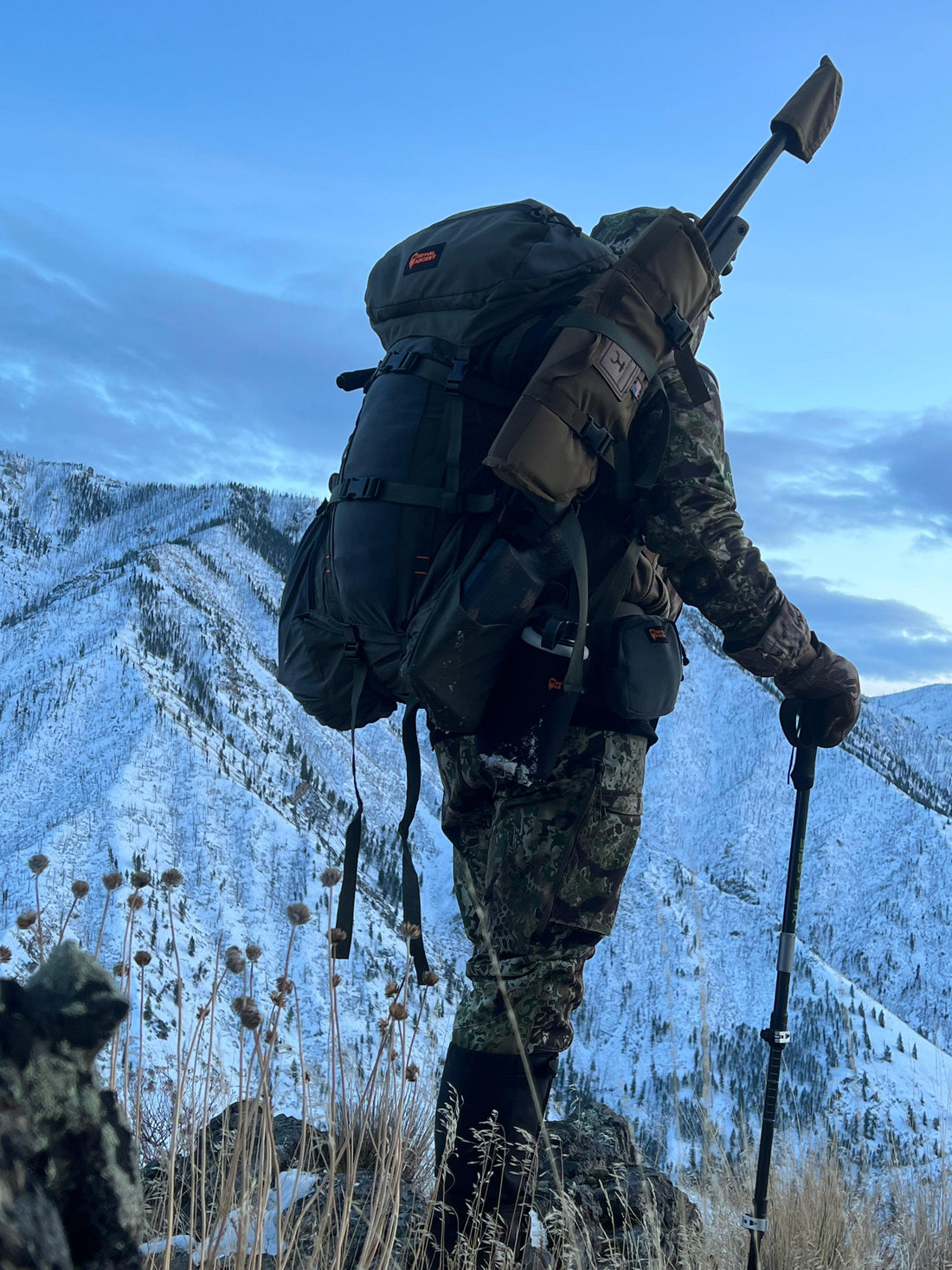
The Two Most Important Pieces of Gear
Dennis Stokes Hunting, and especially backcountry hunting, requires us to rely on certain gear essentials in order to increase the odds of being successful. I'm talking 30,000 foot view gear, major stuff.
Aside from your weapon, there are two pieces of gear you absolutely have to get right for not only the backcountry, but the frontcountry as well: your boots and your pack. With these two important purchases, there is no room for becoming a "fanboy" or "fangirl". Do your research and make a decision for yourself, not just because certain brands are popular.
Boots
First, your boots are the tires on your backcountry vehicle, otherwise known as your legs. They must be comfortable for your feet and be able to withstand everything the environment will throw at them. Everyone's feet are different so one brand or type of boot won't fit everyone. It's a personal choice that your feet have to make. You cannot follow trends of the most popular boots on Instagram or buy boots because it's the one your favorite "celebrity" hunter is using.
There are lots of options from which to choose depending on the season your hunting and the terrain you'll be encountering on the hunt. Waterproof vs. Non-waterproof. Heavy or light. Tall shaft or short. Insulated vs. Non-insulated. I know it's a bit intimidating, but these are all things you must think about. Again, think about what your needs are and do your research. There are tons of articles out there on "boot selection 101".
Get the most versatile hunting pack on the market
The IA8K Pack System from Initial Ascent is perfectly suited for extreme backcountry hunting adventures.
Buy Your IA8K Hunting Pack System
Pack
The next important piece of gear that you must get right is your pack. If your boots are the tires for the vehicle, your pack will be the backseat and truck bed. It will be your mode of carrying gear that you'll need and more importantly, hopefully, carrying your well-deserved harvest back to the truck.
Like boots, the pack can come in lots of configurations for different uses. However, the pack you choose should have the capability to pack heavy loads so that pretty much rules out any traditional backpacks from REI. It needs to have a frame and suspension designed to carry over 100 lb comfortably. When you plan to carry that kind of weight, the pack must be specifically designed with these types of loads in mind for safety and durability.
Packs generally come in all different sizes from 1500 cubic inch day packs to nearly 8000 cubic inch expedition packs. The size pack that you use will typically be chosen to match the type of hunt and the season. For instance, if you are hunting in early September from a base camp, you'll probably only need a bag under 2000 cubic inches simply called a day pack. This will ideally be lightweight and able to contain only the essentials for that day's hunt. On the other hand, if you're heading out on a late-season, 10-day backcountry hunt, you'll be carrying a 6000 cubic inch setup at minimum.
Another thing to think about with pack selection is organizational capabilities of the pack itself. You can buy packs that are "minimalist" setups with very few (if any) pockets, and the user must rely on the one, large pocket of the main body to house gear. The advantage to these setups are usually weight savings and cost savings. Conversely, you can buy packs that have tons of pockets for storage and organization. They cost a little more and tend to run heavier than the former scenario.
What do I like in a pack?
I like a modular setup. What I mean by this is that I like to have one frame and suspension that is reliable, comfortable, and versatile, and one that can easily transition between different sized bags. This typically saves money as the frame and suspension are the bulk of the cost in backpacks. I also like to have some organization with a few well thought out pockets but not so many to where I lose items. The pack must be durable yet lightweight, and it must be able to carry loads that weigh more than me.Fortunately, here at Initial Ascent, we have this system. It was developed from years of Joe and I figuring out what we want in a modular pack system. It is backed by the Integrous Frame and Suspension and ranges from our Day Pack (Pannier Load Carrier and Lid) to a 8k Pack System depending on your needs. So, if you're looking for that pack that can do it all, look no further than the Initial Ascent Pack System.
